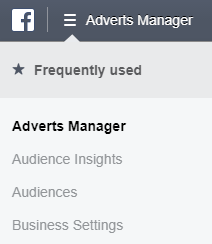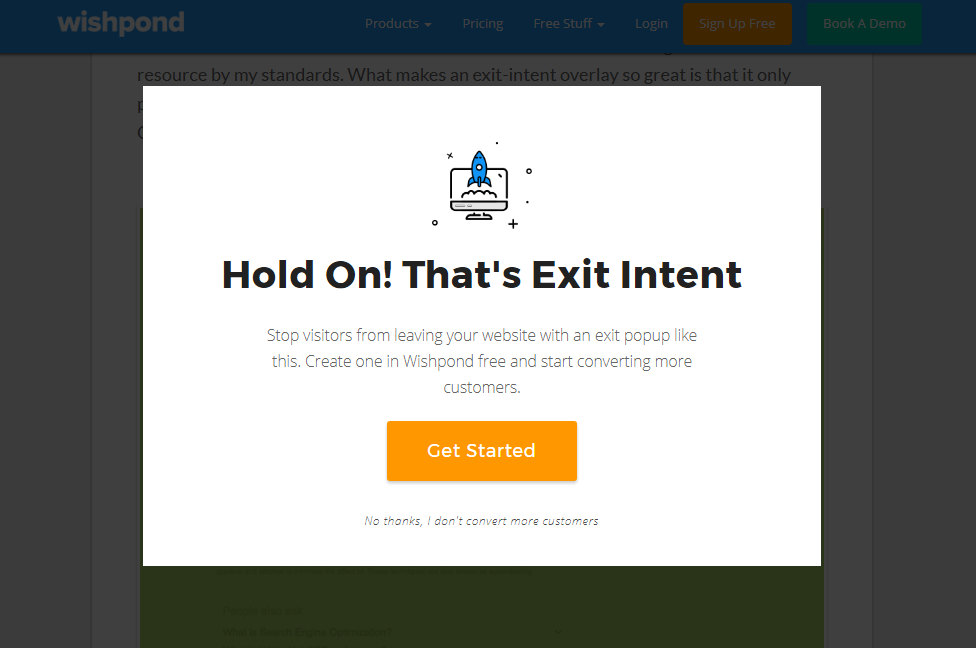If you’ve been involved in marketing for a while, you’ve probably heard the phrase: “The money is in the list.”
With new technologies on the rise, email marketing can feel antiquated. In reality, email marketing is still incredibly effective – both in terms of long-term brand building as well as generating profits.
In a 2016 study, 86% of marketers stated that they were planning to increase their upcoming email marketing budgets.
For those willing to take the time to grow their lists and regularly craft high value, personalized messages for their audiences, the rewards can be exceptional.
According to DMA, email has an average ROI of $38 for every $1 spent.
For online services and ecommerce businesses alike, growing your email list as quickly as possible should be a priority.
Here are some of my favorite growth hacks that you can immediately deploy to increase your list of email subscribers.
1. Content Upgrades
Oftentimes, marketers will create useful lead magnets in the form of ebooks, webinars and checklists. All of these things are great, but it’s hard to create a lead magnet that resonates with everyone.
For instance, look at the huge umbrella of internet marketing. A visitor that would be interested in a free ebook about infographic design may not care for information about longtail keyword research, and vice versa.
In order to capture the maximum amount of leads, it’s important to think about context. Instead of offering a one-size-fits-all lead magnet, consider including a content upgrade at the end of your most popular posts.
A content upgrade is simply a lead magnet that relates to an existing article and delivers extended information and value in exchange for contact information. They look like this:

Content upgrades are laser-focused on the reader’s interests. If someone were reading an article about DIY whiteboard explainer videos, then a checklist containing useful resources about video design would make an excellent content upgrade. Or if they’re viewing an article titled “5 Google Analytics hacks” then the content upgrade may offer “Download these 3 super-powerful hacks that have been a secret until now.” You’ll then ask for name and email and in return they get a PDF containing those 3 hacks.
Consult Google Analytics and identify your most popular posts. Next, think of a way to enhance the informational value of the post by including a content upgrade at the end.
If you add a unique content upgrade to a handful of your best posts, you’ll dramatically grow your list. If you can aim for a 5% conversion rate, this can have a big impact on your email subscriber list.
2. Leverage Instagram
Thanks to the rapid rise of mobile internet access in recent years, photo-sharing platforms are more popular than ever before.
Marketers are very aware of this trend. According to Emarketer, 70.7% of US businesses are now using Instagram, compared to just 48.8% in 2016.
In my opinion, Instagram is a great platform for engaging your audience with compelling imagery, but it’s also extremely useful for converting your audience into email subscribers.
The following Instagram tactic is ridiculously simple, yet underutilized.
Instead of using your Instagram bio to link to your homepage, link to a landing page containing a lead magnet that users can download in exchange for contact details.
It’s important that your lead magnet is something that provides genuine value to your audience. Hopefully you’ve done some buyer persona research and know exactly what frustrations and pain points people have – so you can offer a solution with a free ebook.
Given Instagram’s significant mobile user base, it’s important to ensure your landing page is optimized for all devices.
Next, visit the Instagram pages of competing brands in your niche (or any accounts that would have followers who would be interested in your brand) and start following everyone who leaves positive comments.
A percentage of people who you follow will follow you back. If you spend several hours per day doing this and you’re regularly posting high quality images to keep people engaged, you will notice a consistent stream of Instagram users clicking through to your landing page and hopefully, converting.
3. Retargeting
If someone arrives on your website and doesn’t make a purchase or subscribe to your email list, it’s easy to assume that they’re simply not interested in what you have to offer.
In my experience, this is often not the case.
We’re living in a world of perpetual distractions, and there are millions of reasons why a person wouldn’t engage with your site on their first visit. For instance, I notice that conversions are very low during the night hours, yet if the same person arrived on my website during the afternoon, they’d be much more likely to sign up to my list.
Fortunately, you can use Facebook retargeting to reconnect with these lost visitors and give them a second chance at subscribing to your list.
First, you will need to create a pixel in Facebook ads manager.
Next, install this code onto your site so that you can track the interactions and movements of your visitors.
Next, click on the “Audiences” tab in ads manager and create a new custom audience.

I recommend creating one audience for all website visitors, then a separate audience for all the people who have visited your lead magnet landing page but who haven’t converted.
This can be achieved by including people who have visited the URL of the landing page, but excluding people who have seen the thank you page for your email list subscription.

You can fire off adverts promoting your lead magnet to both audiences, and see which converts better. In my experience, retargeted visitors always convert at a higher rate than cold traffic – since they’re already familiar with your brand.
4. Cross Promotion
The quickest way to grow your list is to grab people from someone else’s list.
Make a list of other companies who serve a similar demographic, but who are not competitors.
For instance, if you sell dog training books and courses, a company that sells dog food and accessories would be a wise choice.
Next, get in contact and suggest a mutually beneficial agreement where you recommend each other’s products and services to your own lists. You can promote special deals, free giveaways or even just a lead magnet if you think it will entice people to subscribe.
When people receive an email from an unknown brand, they’re immediately thinking: “What’s in it for me?”
Begin your email by mentioning that you want to promote their products to your list for free, and then you can ask for something in return afterwards.
5. Contests and Free Giveaways
You know who likes something for free? Everyone.
As a consumer, I always feel a sense of excitement when someone offers me something for free – even if I probably wouldn’t have purchased it in the first place.
Running a contest can be a great way to build a sense of community around a brand, but it’s also useful for generating email leads that you can market to at a later date.
So long as you promote your contest properly and the prize is something that is genuinely valuable to your audience (hint: you should know your audience intimately), you’ll definitely receive an abundance of entries.
Obviously, it’s important to ensure that people submit their entries via email so you can add them to your list.
Alternatively, free giveaways can be a great way to get people on your list. However, it’s important to have a good understanding of your customer lifetime value (CLV) before you consider free giveaways.
If you know that your average email list subscriber is worth $30 in revenue for the first 6 months they’re on your list, then it’s a no brainer to send them a free product that costs $5 to manufacture in exchange for their contact information.
So long as you keep tabs of the numbers, this tactic will scale your email list rapidly. The more money you put into free giveaways, the more money you generate on the back end.
6. Exit Intent Popups
Exit intent popups are used to capture leads that are about to leave your website.
This technology works by monitoring mouse movements. If it appears that the user is likely to leave the page, then a popup will appear imploring them to sign up for a free lead magnet.
When using exit intent popups, it’s important to keep user experience in mind. When done poorly, a popup can look spammy and annoying.
Google is already penalizing mobile sites with spammy pop ups. This change may occur for desktop as well in the near future.
An exit popup should be displayed clearly and in an unobstructive manner. Remember, it’s there to provide something of value to your audience, not just to acquire an email address by any means necessary.
Concise copy with a clear call-to-action is recommended. Also, you may wish to incorporate colors that contrast with the rest of your site in order to grab attention (think about the neutral themed ecommerce site which feature bright orange “Buy Now” buttons).
Here is an example of a nice concise exit intent popup by Wishpond, which ironically corresponds to the subject of creating a great exit intent popup.
Conclusion
While there are many marketing techniques that promise a faster ROI than email marketing, it’s important not to neglect one of the best methods for staying in contact with your audience.
Techniques for acquiring customers come and go, but building a relationship with your existing customers is essential if you want to stand the test of time.
If you’re serious about building a long-term brand rather than a short-term money making enterprise, growing your email list must be a priority.
Can you think of any other growth hacks to boost your email subscribers? Please let me know in the comments below.
About the Author: Mo Harake brings over 12 years of ecommerce and digital marketing experience leading brands like FIJI Water, 7Diamonds, Kill Cliff and venture-backed startups to his work as Managing Director of Stray Digital. For more on his approach to ecommerce, content marketing and growth hacking, visit him on LinkedIn or at the Stray Digital blog.
